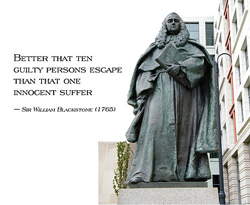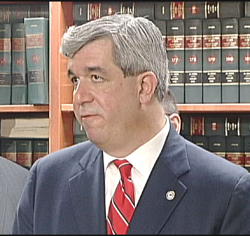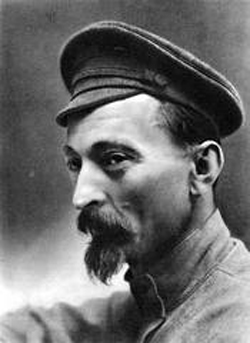Police Critics of DA Sedita Would Risk Convicting Innocent
By Frank Parlato
A recent Buffalo News story reported that some 21 members of the law enforcement community – who, almost to a man or woman, chose to remain anonymous – had harsh words of criticism for Erie County District Attorney Frank A. Sedita III because “he refuses to take cases unless the evidence is ironclad, and relishes high conviction rates more than the fight for justice.”
Some of these sources, based on their comments, seem to relish indictments more than the fight for justice. They, obviously, were not pleased that Sedita’s approach to being a prosecutor is not necessarily to be a tool of law enforcement officers.
In fact, in response to the cadre of anonymous sources, Sedita told the News that, “it is his sworn duty to ensure that only the guilty are convicted and that innocent people are not put on trial.”
And that his office will not be swayed by emotions, hunches and opinions of the police, despite the hard work they do, without ironclad evidence.
Of course, it is not as if Sedita convicted no one. He obtained 3,868 convictions out of 3,978 felony cases filed over the last two years, a 98 percent conviction rate.
Still, as his anonymous critics pressed, saying he won’t prosecute the “tough cases,” one got to hoping that by “tough,” they did not mean cases where a person might be innocent and, as far as they were concerned, they might just as well put the suspect through the tough ordeal of a trial and see what a jury does.
“Our review process has resulted in the exoneration of 43 defendants who were accused of felonies by police officers...” Sedita told the News, explaining perhaps the real reason that some police officers are miffed with him. “Please note that all of these exonerations occurred after the defendant’s arrest but before the ordeal of a trial. It would be unlawful and unethical for me to prosecute a case that I know does not have sufficient evidence.”
Exoneration of innocent people whom the police were certain were guilty led to praise for Sedita by the Innocence Project, a non-profit legal organization committed to exonerating wrongly convicted people through the use of DNA testing. Founded in 1992, the Innocence Project has freed 301 wrongfully convicted people, including 18 who spent time on death row.
One of few police sources to be named in the News article is Capt. Gregg Blosat, who wrote an article in the Buffalo PBA’s union newspaper, the Blue Line, arguing Sedita needs to take a more aggressive stance against shooters and their accomplices.
Blosat, arguing for a better parsing of “beyond a reasonable doubt” writes that it “DOES NOT mean all doubt, so help the jurors understand that. If you actually want to stop the blood – prosecute all shooters.”
Still, Blosat’s standard is dubious, if not a little frightening. One suspects, and perhaps it is apparent, that he is calling for the DA to prosecute anyone police say is guilty regardless of the DA's judgment of the weight of the evidence.
Blosat, incidentally, may have been saved by reasonable doubt himself when he was tried in the 1997 police beating death of Mark Virginia. Blosat, who was involved in restraining Virginia, was charged and a jury found him not guilty of manual strangulation.
Another source in the Sedita story helped refine the controversy a little better: If it is “not a 100 percent slam-dunk case, then (Sedita’s office will) opt not to move forward,” the unnamed source said. “Often there’s great evidence, and it’s something we should let the jury system decide on.”
This makes a point for and against the separation of duties and judgment of the police and the district attorney.
The argument characterized by "charge a man and let the jury system decide even dubious cases" will undoubtedly mean more guilty persons will be convicted.
The argument against it is that only five percent of criminal cases go to trial. A jury is, in fact, rarely convened. Ninety-five percent of convictions are by plea bargain. Still, an indictment can ruin an innocent person's life and forever tarnish his reputation. An indictment can also be tantamount to a plea bargain. Prosecutors routinely charge defendants with multiple counts, then the bargaining begins. An innocent man may not be able to afford bail or his own lawyer and faced with a choice of pleading guilty and, for example, serving two years in prison or fighting it and risking 25 years, there have been undoubtedly innocent men and women who have chosen the former.
Since the late 1980s there have been 850 exonerations nationwide, according to University of Michigan law professor Samuel Gross, whose 2008 analysis found that the rate of exoneration of capital defendants is 2.3 percent. If the rate of exoneration for non-death-row crimes were the same, there could have been as many as 87,000 exonerations from 1989-2003. Since the average time from conviction to exoneration is 13 years, this suggests that lesser offenses are not ones innocent persons will usually fight for since time served is shorter than the time it takes to get exonerated.
At the end of the day, Sedita seems to echo notable men of law and justice of the past. Sir William Blackstone’s rule of ten comes to mind: "Better that 10 guilty persons escape than that one innocent suffer." Benjamin Franklin set the number at 100.
John Adams said, “It is more important that innocence be protected than it is that guilt be punished, for guilt and crimes are so frequent in this world that they cannot all be punished.”
And Moses Maimonides (d. 1204), the Jewish theologian, quoted Exodus 23:7, "The innocent and righteous slay thou not," when he argued that God “has shut this door" against the use of presumptive evidence, and parsed "beyond a reasonable doubt" to "near absolute certainty", for "it is better and more satisfactory to acquit a thousand guilty persons than to put a single innocent one to death."
In fairness, the police sources seem to echo voices of the past, too. Some will find them equally or more convincing.
German Chancellor Otto von Bismarck said, "It is better that 10 innocent men suffer than one guilty man escape." Pol Pot made similar remarks.
Feliks Dzerzhinsky, founder of the Soviet Secret Police, said, "Better to execute 10 innocent men than to leave one guilty man alive." His successor, Nikolai Yezhov agreed and quoted the Russian proverb, "When you cut down the forest, woodchips fly."
Major Nungo, a Colombian military prosecutor offers what could be an excellent addendum for Capt. Blosat’s desire to see bloodshed end: "For us military men, everybody is guilty until proved otherwise. . . . Better to condemn an innocent man than to acquit a guilty one, because among the innocent condemned there may be a guilty man."
William Paley offered a reasoned approach for the police state. He said it was an act of patriotism for an innocent man to be convicted. "He who falls by a mistaken sentence may be considered as falling for his country," Paley said, arguing that lower standards of evidence will put some innocent people in prison, but is a necessary evil to help put guilty and dangerous criminals away where they cannot harm the public.
In 1607, in a case from the Star Chamber court, Matthew Hale said that it “is better five guilty persons should escape unpunished, than one innocent person should die." But he admitted this doctrine was inconvenient because it is hard to get good direct evidence of witchcraft, so that many guilty witches escaped punishment. Nevertheless, Hale sentenced Amy Duny and Rose Cullender to death for witchcraft, sorcery and "unnatural love."
Sedita, one rather suspects, would not have prosecuted women for witchcraft with such evidence that any number of anonymous sources would have chided him for in local newspapers.


